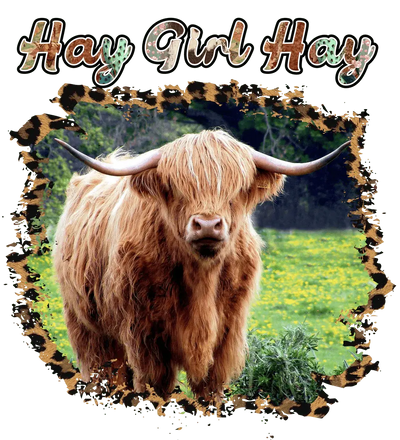

DTF Printing Explained: Meaning, Process and how it works?
Mar 7, 2024 (Updated on Nov 14, 2025)
Introduction
In the world of custom apparel and textile printing, DTF printing is rapidly becoming a go-to technique. Whether you are a small business owner, an e-commerce brand or a custom-print enthusiast, understanding what DTF means in printing with its process, benefits and limitations is key. At DTF Dallas, we specialise in delivering vibrant, versatile prints on a wide variety of fabrics using state-of-the-art DTF technology.
This guide explores exactly what DTF printing is, how it works, and why it’s worth considering, especially if you’re targeting businesses or consumers seeking high-quality custom apparel. We also cover practical tips for successful prints, applications, and compare it with other popular methods.
What is DTF Printing?
DTF (Direct-to-Film) printing is an advanced textile printing technology where designs are printed onto a special PET film, coated with a heat-activated adhesive powder, and then transferred onto garments using a heat press. This innovative method eliminates the need for fabric pre-treatment and works seamlessly on a wide range of materials such as cotton, polyester, blends, and more. The result is a long-lasting, vibrant, and flexible print that maintains its quality even after multiple washes ideal for custom apparel, bags, and home décor applications.
The DTF Printing Process

How Does DTF Printing Work? – The Process of DTF Printing
The DTF (Direct-to-Film) printing process is a detailed, multi-step method that combines digital precision with heat transfer technology to create vibrant, long-lasting prints on various fabrics. Here’s how it works from start to finish:
1. File Preparation
The process begins with creating or preparing your design using graphic design software. The artwork is then processed through RIP (Raster Image Processor) software, which manages color profiles and adds a white ink layer beneath the design to ensure bright, opaque prints on any fabric color.
2. Printing the Design
A specialized DTF printer prints the design onto a PET (polyethylene terephthalate) film. The printer first applies the CMYK colors and then adds a solid white ink layer on top to act as an underbase, ensuring the design appears vivid and sharp once transferred.
3. Applying Adhesive Powder (Powdering)
While the ink is still wet, a fine adhesive powder often called hot-melt powder is evenly spread across the printed film. This can be done manually or using an automatic powder shaker. Excess powder is gently removed to ensure a clean and even coating.
4. Curing the Powder
The printed and powdered film is then cured using a heat press or curing oven. This step melts and activates the adhesive powder, giving it a slightly textured, wax-like finish. Proper ventilation and safety measures are important here to avoid inhaling any fumes during curing.
5. Transferring the Design
Once cured, the transfer film is positioned over the desired fabric, such as a T-shirt or hoodie. Using a heat press, the design is transferred onto the garment through a combination of heat and pressure, bonding the adhesive and inks firmly to the fabric fibers.
6. Peeling the Film
After pressing, the film is peeled away to reveal the finished design. For “cold peel” transfers, the film must cool down before peeling, while “hot peel” films can be removed immediately. A quick final press may be applied to enhance durability and ensure the design adheres perfectly to the fabric.
Tips for Successful DTF Printing
To ensure your DTF prints stand out and last, here are key tips:
-
Ensure proper film and adhesive powder compatibility: poor powder-film match can lead to weak bonding or peeling.
-
Calibrate printer settings and ink profile for the film you are using (different films may require specific RIP settings).
-
Use correct heat press parameters (temperature, pressure, dwell time) suited to the fabric to avoid scorching, dye migration or adhesive issues.
-
Always pre-press the garment to remove moisture and flatten the substrate—especially useful for fleece, knits or mixed fabrics.
-
Cold peel when recommended by the manufacturer: hot peeling can sometimes weaken the adhesive or distort the print.
-
Perform a post-press or curing step to secure the print: this enhances wash-durability.
-
For dark or synthetic fabrics, ensure white‐under-base printing is correct and fully cured, to maximise vibrancy.
-
Test wash cycles: even though DTF prints are highly durable, testing helps validate longevity under real-world conditions (e.g., repeated washes, various detergents).
-
Store unused film transfers in a clean, dust-free environment: adhesive powder attracts dust which can result in print defects.
-
Consider the hand-feel (how the print feels on the fabric). Large solid areas may feel stiffer—so optimise design placement and size for comfort.
Following these practices will help you achieve high-quality DTF prints that meet both aesthetic and performance expectations.
DTF Works for Wide Applications
One of the major strengths of DTF printing is its versatility across both fabric types and application types.
Fabric compatibility
DTF works with:
- Natural fibres (cotton, silk)
- Synthetic fibres (polyester, nylon, spandex blends)
- Blended fabrics (cotton/poly, tri-blends)
- Dark and light-coloured garments
Because the print is transferred via film and includes a white under-base when necessary, vibrant colours are achievable even on dark fabrics, a key advantage over some direct-printing methods.
Application types
DTF is ideal for:
-
Custom t-shirts and hoodies (single runs or short runs)
- Promotional apparel and uniforms
-
Sportswear and activewear fabrics (especially synthetic blends)
-
Home décor items (cushions, fabric panels)
- Accessories (bags, hats, drawstrings)
- Print-on-demand apparel businesses
-
Low-volume, full-colour jobs where screen-printing setup would be too costly
In sum, DTF enables high-quality custom print output across a vast range of substrates and order sizes—making it a flexible choice for modern apparel brands and print shops.
DTF Dallas: Your Ultimate Destination for DTF Printing
At DTF Dallas, we specialise in delivering top-tier DTF printing services tailored to your needs. Whether you are looking for vibrant custom apparel, full-colour promotional garments, or one-off designs, our facility is equipped with the latest DTF technology and materials to ensure superior results.
We work with a wide variety of fabrics including cotton, polyester, blends and more so you’re not limited by substrate. Our team handles the full process: design preparation, film printing, powder application, heat-press transfer and post-press finishing. With our streamlined workflow, you benefit from fast turnaround, excellent durability and vivid prints that stand up to wash and wear.
With a focus on quality, attention to detail and customer satisfaction, DTF Dallas is your go-to partner for custom apparel printing that impresses and lasts.
Conclusion
In the evolving landscape of digital textile printing, DTF (Direct-to-Film) printing has emerged as a powerful, flexible and efficient method. From the film-based transfer process to its compatibility with a wide range of fabrics and ability to produce vibrant, durable prints, DTF is well-suited for custom apparel brands, print houses and on-demand services.
If you’re looking to harness the benefits of modern printing technology—whether for small runs, complex full-colour designs or mixed-substrate output—DTF Dallas offers the expertise and equipment to help you succeed. Visit our site at dtfdallas to explore our services and start your next print project.
FAQ on DTF Printing
What printer do I need to use for DTF transfers?
You need a DTF-capable printer: an inkjet system modified or designed to print on PET film with pigment/water-based inks (including white ink underbase), followed by a powder applicator and curing station. The printer must support the film size and resolution your designs demand.
What kind of film do I need for DTF printing?
You’ll use a specially coated PET transfer film designed for DTF applications. The film must accept the ink, allow a white base layer (if required), and withstand the adhesive powder and heat-press process without distortion. Always choose film supplied or certified by your DTF materials vendor.
Do I need to pre-treat the fabric?
One of the advantages of DTF printing is that in many cases you do not need a pre-treatment solution (as is often required with DTG for cotton). The transfer process and adhesive powder handle the bonding. However, you still should pre-press the fabric to remove moisture and flatten wrinkles.
What are common issues in DTF printing?
Common DTF printing issues include: poor adhesion (due to improper temperature/pressure/time), peeling of the transfer, incorrect curing of the powder adhesive, colour shift (especially on dark fabrics), static or dust contamination of the film, and stiff hand-feel when large solid areas are transferred.
Which is better, DTF or sublimation?
DTF is more versatile in terms of fabric types (works on cotton, polyester, blends) and dark garments; sublimation generally works best on polyester and light-coloured substrates only. However, sublimation prints are embedded in the fabric and feel very soft. If you prioritise softness and are working on polyester light fabrics, sublimation may be ideal; if you need more versatility, DTF leads.
Is DTF printing good quality?
Yes—when done correctly, DTF printing produces high-quality results: sharp details, vibrant colours, strong wash-resistance and compatibility on a wide range of fabrics. The key is correct materials, equipment and process control.
Which is better, DTF or vinyl printing?
Vinyl printing (heat-transfer vinyl) works well for simple single-colour or few-colour designs, but it is less suited for full-colour graphics or very small text. DTF offers full-colour, photo-quality designs with more flexibility, and often better durability. The trade-off may be a slightly higher felt thickness.
How long does a DTF print last?
With proper curing, heat-press settings and garment care (wash inside out, cold wash, avoid harsh detergents or hot drying), a DTF print can last through many washes while retaining colour and integrity. Some reports suggest transfers can endure 50-60 wash cycles or more.
Which is better: screen printing or DTF printing?
Screen printing remains cost-effective for high-volume orders with simple designs (one or two spot-colours). However, for short runs, full-colour designs, or mixed fabrics, DTF offers a more scalable, flexible solution. In many cases they can complement each other rather than one replacing the other.
Do DTF printing transfers crack?
When properly produced with correct adhesive powder, curing and application, DTF transfers have strong durability and are less prone to cracking than older heat-transfer vinyl methods. However, poor curing, excessive heat or improper care (hot wash, tumble dry high) can increase risk of cracking.
Comments 0
Be the first to leave a comment.




